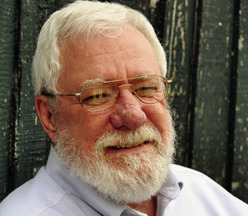Bradshaw
When Ambaugh’s Great Menagerie and Circus visited south Louisiana in 1878, newspaper ads promised that “you will see many strange animals never before on exhibition, and in the Circus many daring acts by the Best Performers ever congregated … in the history of American Amusements.”
The traveling show made stops in Washington, Ville Platte, Opelousas, and Grand Coteau, promising “A Refined and Respectable Entertainment! A Wilderness of Zoological Rarities! A Princely Circus Retinue!” and billed itself as “without compeer on this globe.”
Some of those advertising claims may have been not too far from the truth. A newspaper account next to the ad suggested that besides being entertaining and slightly adventurous, the menagerie offered a condensed course in natural science.
That entertainment and education wasn’t cheap. A ticket in 1878 cost a full dollar. That would be equivalent to at least twenty dollars today.
The show was begun by Isaac A. Van Amburgh, who is credited with developing the first wild animal act in modern times. According to one story, the biblical tale of Daniel in the lion’s den so impressed him as a young man that he decided to become a lion tamer. He began his career as a cage cleaner in a tiny traveling menagerie but showed such an aptitude for training the wild animals whose cages he cleaned that the owners promoted him to animal trainer and performer.
Not long after that he developed his own show and, according to a biographical sketch, “became the star attraction of the traveling menagerie world by entering the cages of the big cats … and sometimes thrusting his head into their mouths.” The account, possibly written by Amburgh himself, claimed, “The success of the enterprise … secured for him … the applause and admiration of the world.”

His derring-do inspired a popular song that proclaimed:
Van Amburgh is the man, who goes to all the shows He goes into the lion’s cage, and tells you all he knows; He sticks his head in the lion’s mouth, and keeps it there a-while, And when he pulls it out again, he greets you with a smile.
Isaac died a wealthy man in 1865, ten years before the show’s visit to south Louisiana, but Hyatt Frost, who had been manager under the lion tamer, took over and continued using the Van Amburgh name. He was running the show when it visited here in 1878.
An account in the Opelousas newspaper tells us: “The menagerie comprises one or more of almost every wild beast and bird in the world,” and an advertising pamphlet titled “Illustrated and Descriptive History of the Animals Contained in Van Amburgh & Co’s New Great Golden Menagerie” describes lions, tigers, leopards, panthers, wolves, bears, hyenas, camels, lamas, rattlesnakes, gazelles, hippopotamuses, and many birds.”
The ads promised that the full menagerie would be displayed in each community and that “any person of ordinary intelligence can here wrap his thoughts in study upon the nature of these ferocious animals and observe their traits and characteristics safe from their avengeful fury. … Natural history cannot give you a better knowledge of beasts and birds than a menagerie, for here you have it right under your eye, and you can become better acquainted with the habits of animals in such a manner in one hour than you can by reading of them on one full day.”
It was likely that folks living between the show towns got at least a nickel’s worth of natural history as the menagerie moved from one place to another. The show almost certainly came to Washington by steamboat. There were no railroads yet, so getting Van Armbugh’s celebrated menagerie from the port to other towns involved a procession of cages pulled by mules and horses through the countryside and down the main streets of small communities. People lined the road to watch the procession.
No schedules were posted of when the spectacular parade would show up at one place or another, but I’d bet that a cacophony of barking dogs, replies by the wild beasts, and just the creaking of the wagon wheels gave everyone ample time to turn out to see the “Wilderness of Zoological Rarities” pass by and marvel at the many strange animals they’d never seen before, and likely would never see again.
You can contact Jim Bradshaw at [email protected] or P.O. Box 1121, Washington LA 70589.

